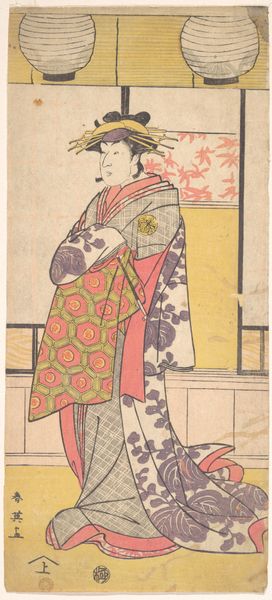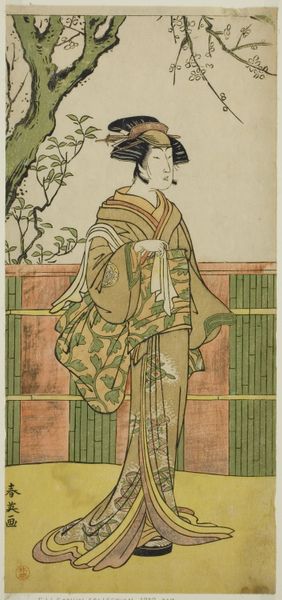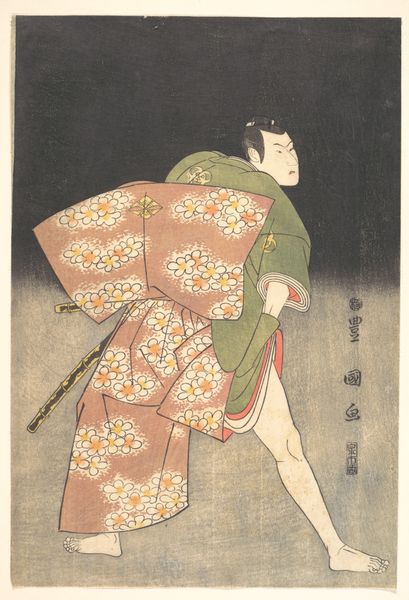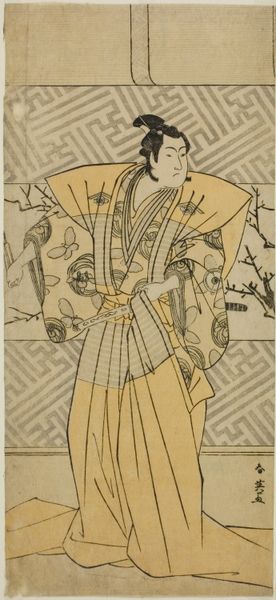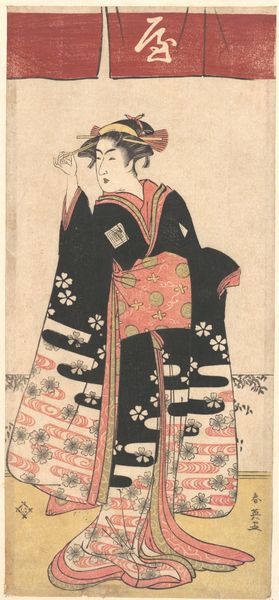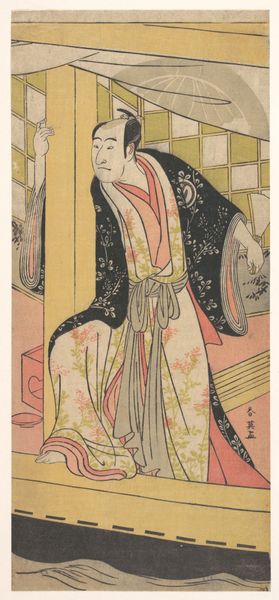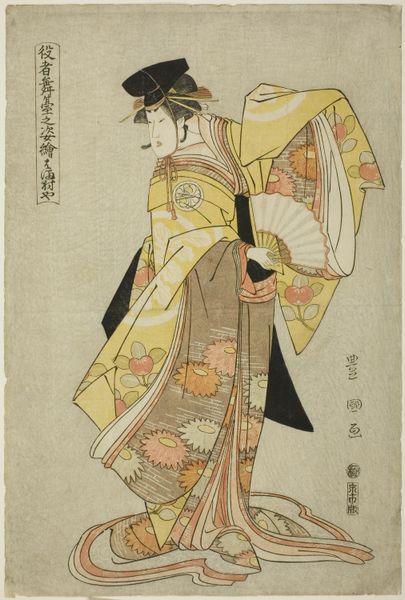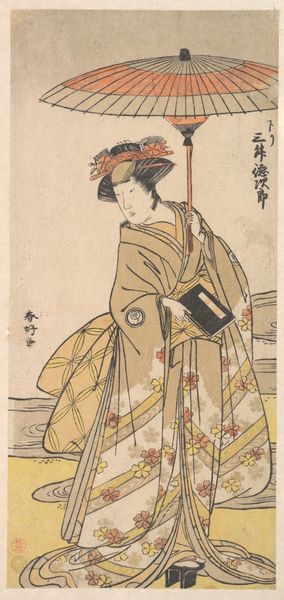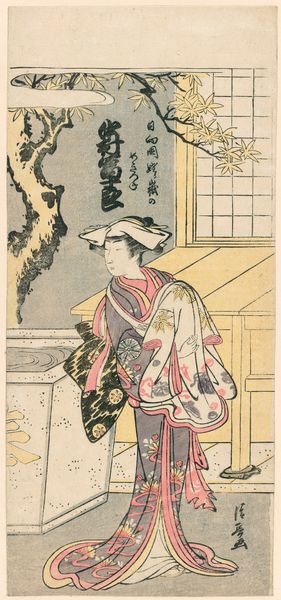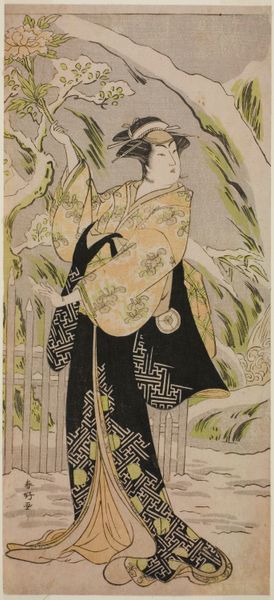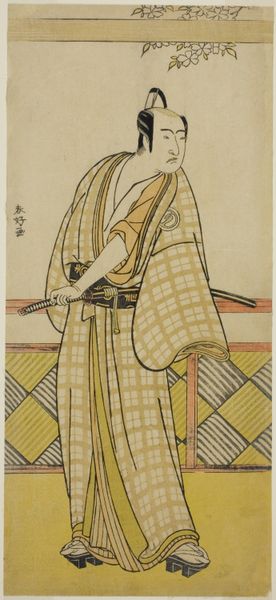
print, woodblock-print
#
portrait
# print
#
asian-art
#
ukiyo-e
#
woodblock-print
Dimensions: H. 13 1/8 in. (33.3 cm); W. 5 3/4 in. (14.6 cm)
Copyright: Public Domain
Curator: Look at this striking image of an actor of the Iwai clan, presented as a woman, in this woodblock print dating from around 1795. The work is attributed to Katsukawa Shun'ei. Editor: The grid pattern of the screen behind the figure immediately commands attention; it's so structured, yet the soft lines of the figure contrast with it in a way that feels almost subversive. Curator: The fact that it depicts a male actor performing as a woman adds another layer to that perceived subversiveness. Kabuki theater during the Edo period was fraught with complex gender dynamics. Men played all roles, but social mores about the acceptability of men behaving effeminately onstage generated fascinating tension, as did their lives offstage. The onnagata, as these male actors were called, were often objects of desire for both men and women, complicating contemporary attitudes toward same-sex desire. Editor: Interesting. And to step back into pure aesthetics, it seems the artist skillfully directs our eye through color and placement, following the line of the kimono's design right down to the signature. It really brings an interesting visual balance to the whole piece. Curator: Absolutely. And the symbols woven into the garment speak to aspirations of beauty and perhaps even longevity, as we see cranes amid flowering plum branches. These would have been familiar to the intended audience and imbued the artwork with deeper meaning tied to their values and beliefs about social presentation. The artwork is both portrait and carefully-coded representation of identity. Editor: What stands out to me is how seemingly simple design elements draw you into quite complex themes of performance and reality and, ultimately, the artifice of gender. Curator: Exactly. Looking at it now, one gains insights into not only Edo period theatre but also, perhaps, broader human conditions of identity and presentation. Editor: It gives us much to think about concerning visual presentation, doesn't it?
Comments
No comments
Be the first to comment and join the conversation on the ultimate creative platform.
